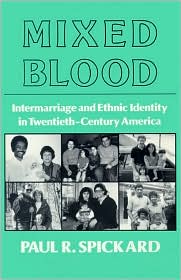Post-Race on America’s Next Top ModelPosted in Arts, Communications/Media Studies, Media Archive, Papers/Presentations, Social Science, United States, Women on 2010-01-02 01:27Z by Steven |
Post-Race on America’s Next Top Model
International Communication Association, TBA
2007 Conference
San Francisco, CA
2007-05-23
Ralina L. Joseph, Assistant Professor of Communications, American Ethnic Studies and Women Studies
University of Washington
African American supermodel Tyra Banks’s popular reality show for aspiring young models, America’s Next Top Model, both reflects and produces twenty-first century ideals of post-feminism, a “girl power” moment in which second-wave feminism is antiquated, and post-race, a post-Civil Rights moment in which race is relic. ANTM features a sizable number of women of color contestants who are led by an African American female leader. The show’s explicit message is that racialized and gendered identities are equalized in the “Top Model” space. However, all of the contestants, both women of color and white women, are disciplined so that they must signify hyper-raced, hyper-sexed and essentialized versions of “difference.” At the same time, the contestants must also perform as safe, genteel, and essentially white middle class “Cover Girls.”
In this paper I investigate performances of racial and gender masquerade in a 2004 episode of America’s Next Top Model. This episode features a confluence of race as costume, because the contestants “switch ethnicities” with the help of makeup and wigs, and gender as maternity, because the contestants don milk mustaches and three-year-old children as props. ANTM demonstrates that performances of post-ethnicity and post-feminism are always reliant upon racialized and gendered stereotypes and the logic of capitalism. While the mixed-race contestants are showcased as the most seamless transgressors of racialized and gendered identity, as all of the women slip on race and gender “costumes,” the show illustrates the seductive power of post-identity politics in the twenty first century United States.
…As a graduate student I worked on notions of contemporary mixed-race African-American representations as being particularly emblematic of a post-race and postfeminist excuse that was vital in constructing neo-conservative political measures like California’s 1996 anti-affirmative action measure prop 209 and 2003’s racial privacy initiative prop[osition] 54. Historically and into the new millennium hybridized Black female bodies have been represented as not only sexually available, but also complicit in their exploitation (one of my favorite examples is Halle Berry’s much lauded academy award winning turn in 2001’s Monster’s Ball where she screams out in her sex scene with her death row inmate husband’s prison guard/executioner Billy Bob Thornton, “make me feel good!”). What I’ve been working on post-grad school is how these connected ideologies of post-race and post-feminism operate in other popular culture where mixed-race functions more often as a metaphor. One cite I’ve been investigating is the celebrity of thirty-three year old African American supermodel turned media mogul Tyra Banks and the phenomenon of her reality television show, America’s Next Top Model…
Read the entire article here.




